The Ultimate Guide to Yosemite National Park
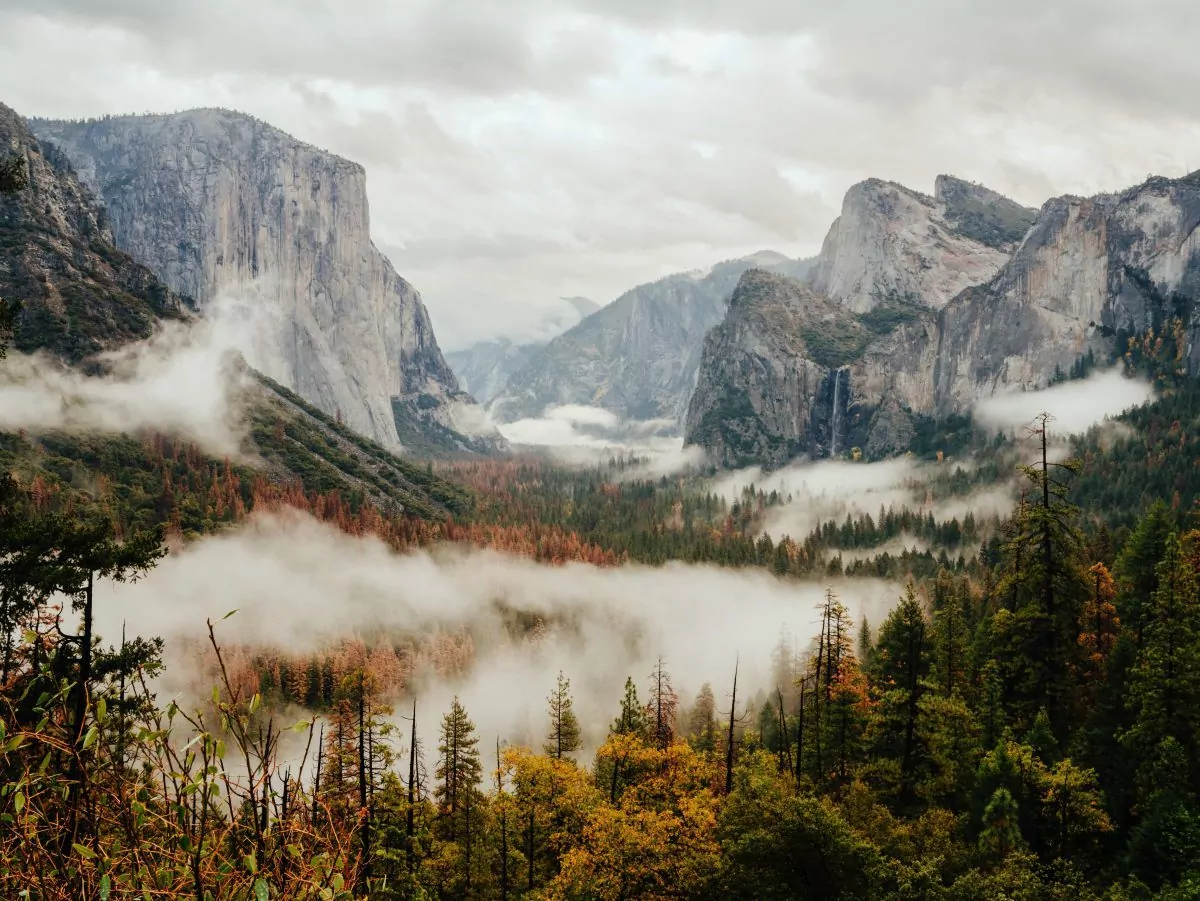
Photo by Dan Newman on Unsplash
Yosemite National Park is one of the crown jewels of the National Park Service. Enormous Sequoia trees dwarf visitors and granite walls tower thousands of feet over the Merced River in unusually smooth, sheer shapes. The park is famous for its many influential admirers, such as Ansel Adams and John Muir, the latter of whom described the Sierra Nevada as the “range of light” and advocated fiercely for Yosemite’s preservation.
The granite that makes Yosemite so famous became exposed 65 million years ago and was deeply carved by streams as the mountains began to uplift. Many of the present landforms existed before the glacial period and owe their striking appearance to erosion, but the glaciers’ effects can be seen in the lakes, U-shaped valleys, polished granite, and rounded domes of the Sierra.
Read on for a comprehensive guide to Yosemite National Park and discover why it’s the ultimate multi-sport destination.
Explore Yosemite with Expert Guides
Where is Yosemite National Park?
Yosemite National Park is located in central California in the Sierra Nevada mountain range. If the endless activities and spectacular granite shapes aren’t enough of a draw, Yosemite is also extremely accessible. The western entrance gate is just 3.5 hours away from San Francisco and the eastern gate is only 2.5 from Reno.
If you plan to visit, the closest airport is in Fresno, California—a 2-hour drive from the Yosemite Valley. However, depending on your itinerary, you may opt to fly into San Francisco or Reno, NV.
If you’re road-tripping to Yosemite, it is close to many other amazing destinations in California, including Lake Tahoe, Mono Lake, the Alabama Hills, and Death Valley National Park. So, it is a perfect destination for your cross-country adventures.
Why Visit Yosemite National Park?
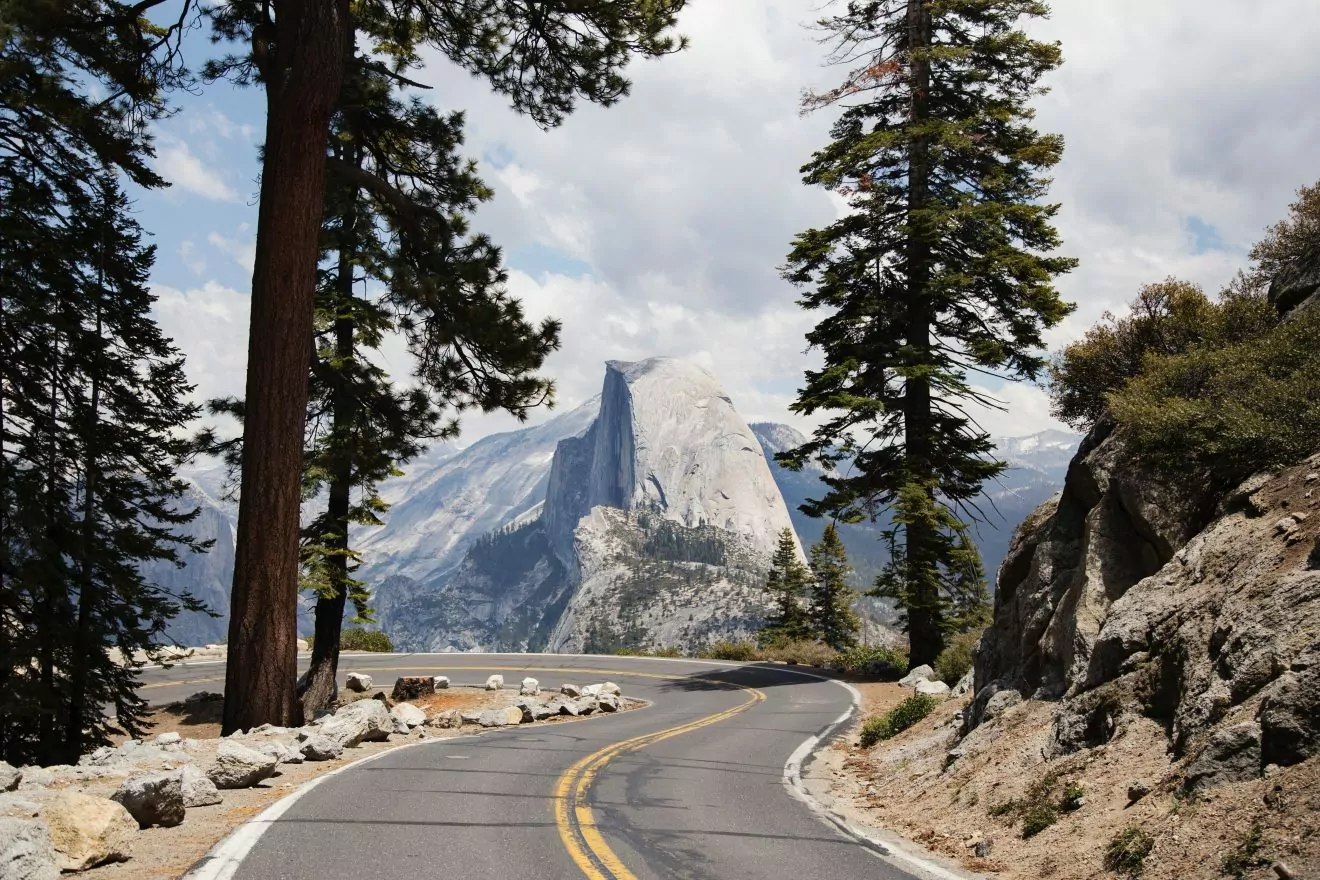
Photo by Josh Carter on Unsplash
Yosemite National Park is known for its iconic granite domes, but there’s a lot more to explore. Yosemite consists of multiple regions:
- The Yosemite Valley: Home to El Cap, Half Dome, and many more glacially-carved rock monoliths. This is the area that most visitors picture when they think about Yosemite.
- Tuolumne Meadows: The high alpine of the Park where you’ll experience lush green meadows, jagged granite peaks, and wide-open views.
- Glacier Point: Sitting above the Yosemite Valley, this area is accessed via a twisty, turny road that may just make your jaw drop in awe.
- Wawona: This historic village sits at the southern entrance of the Park and is quaint and quiet compared to the Valley. Many come here to visit the Mariposa Grove of Sequoias, but this region is steeped in history and also has a great waterfall hike.
- Hetch Hetchy Reservoir: Once a twin to the Yosemite Valley, the Hetch Hetchy Valley was dammed to create a reservoir with drinking water for San Francisco. It’s worth a visit, especially in the Spring when the waterfalls are raging.
Because of the variety of landscapes, anyone who visits Yosemite can find something they love. Whether you’re looking to take in views from the car window, sit by a babbling creek, or hike deep into the backcountry and find solitude, you can do it in Yosemite National Park.
More Resources
- Yosemite Visitors Guide
- Best Yosemite National Park Tours
- 5 Best Yosemite Backpacking Trips
- 3 Epic Yosemite Hiking Experiences
- Yosemite in One Day
When to Visit
Yosemite is open year-round, but each season comes with its own considerations. We’ve also created an entire guide for the best time to visit Yosemite depending on your desired activity.
Spring
Spring is an ideal time to visit Yosemite if you want to experience the waterfall show in the Valley. Yosemite Falls, Vernal Falls, and others are at their fullest, and the daytime temperatures are pleasant for hiking. The trails in Hetch Hetchy are also great this time of year, and wildflowers may be popping up in this region. However, snow lingers in the high country and many alpine hiking trails are still closed. (Tioga Pass will almost definitely be closed, so you’ll only be able to access the Park from the western side.)
Summer
Summer is the busiest time of year in the Park, so it’s a great time to visit some of the less popular destinations. Spend time up in Tuolumne Meadows or on one of the dozens of high alpine trails. Or, head out on a backpacking trip, as days are long and you’ll have plenty of hours for hiking. While you can hike in the Valley at this time of year, it will be crowded and hot. Start your hikes early, and ride the shuttle or your bike to avoid traffic on the loop road. Keep in mind that one major drawback of this time of year is wildfires and the potential for smoke-filled skies.
Fall
Fall in Yosemite is wonderful; the summer crowds have dispersed, the temperatures have dropped, and the trees are starting to change colors. Early in the season, you can still access the high country before Tioga Pass is shut down for the winter. However, by the Fall, the waterfalls in the valley have run out of water and dried up.
Winter
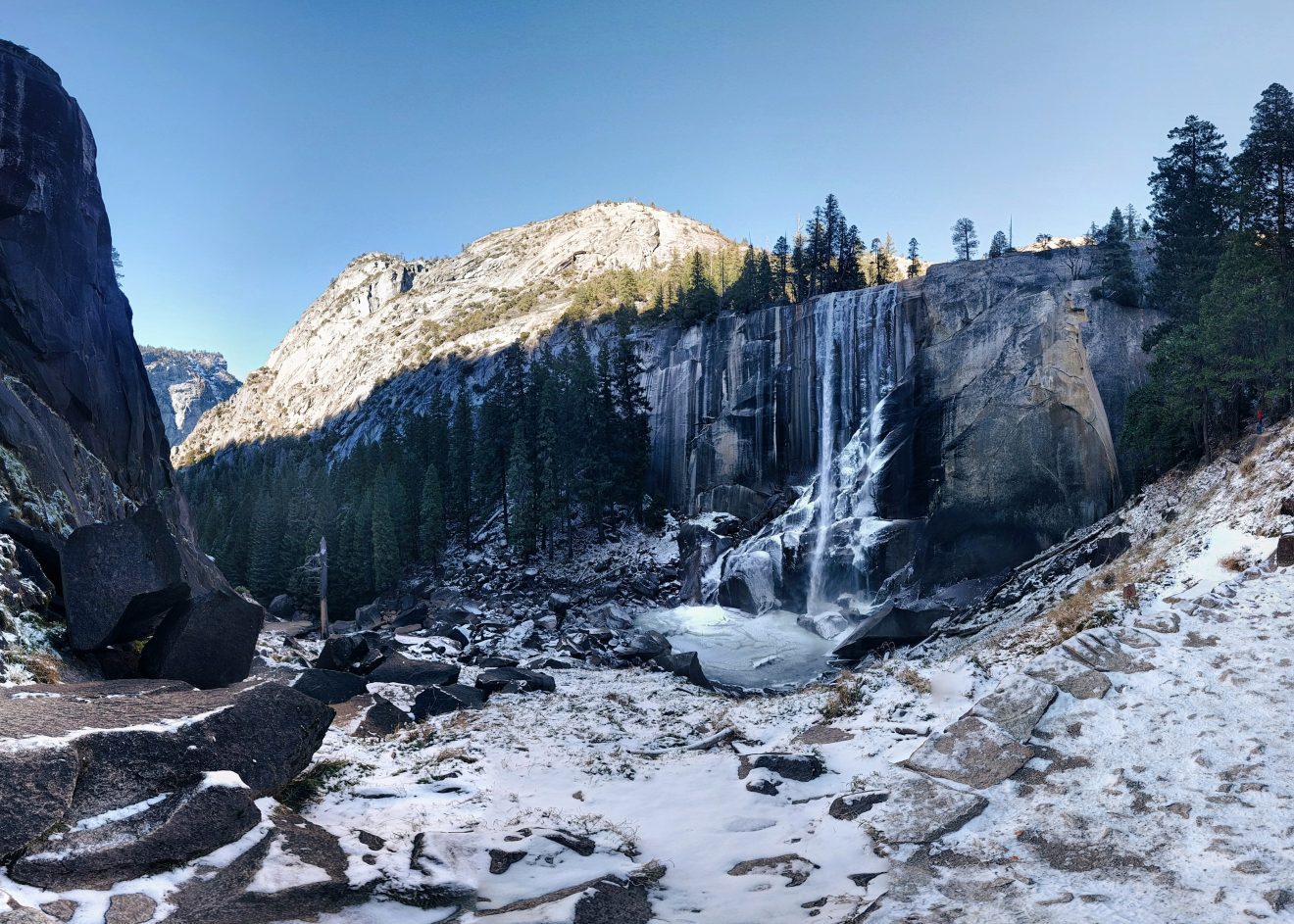
Photo by Devon Hernandez on Unsplash
For those who make the journey to Yosemite in the winter, the Yosemite Valley is truly beautiful beneath a blanket of snow, so it is worth a visit in the off-season. However, while the Yosemite Valley is accessible in the winter, many of the campgrounds and roads are closed during this time of year. Some of the most iconic destinations, such as Glacier Point, are not accessible in the winter due to road closures, but adventurous visitors can cross-country ski to the viewpoint. The Tioga Pass Road also closes from October through May, June, or even July during high snow years. So, be prepared to drive to the west entrance if you’re driving from the East.
More Resources
Know Before You Go: Permitting and Reservations
Yosemite National Park now requires entry reservations between 6:00 am – 4:00 pm during peak season, from May 2oth to September 3oth. Several other national parks are implementing this temporary measure in 2022 to manage congestion, so it may be subject to review and change in 2023.
To enter the park, you’ll need a photo ID and one of the following: reservations for lodging, a wilderness permit, a Half Dome permit, or one of the new $2 peak-entry reservations. The comprehensive list can be found on the NPS website.
The peak-entry reservation is valid for three days, but the regular entry fees still apply as well. You can make reservations at recreation.gov on March 23rd or seven days before your visit. They’re sure to go fast though, so mark your calendars!
Where to Stay
1. Upper Pines Campground
The Upper Pines campground is open year-round and is located at the far end of the valley beneath Half Dome. The campground is very large and has shared restrooms and food storage at each site. Reservations are only available online. Last-minute planners can sometimes get lucky, as day-of permits occasionally open around 11:00 AM due to cancellations and early check-outs.
Upper Pines is near the trailhead for Half Dome and Vernal and Nevada Falls, so it is convenient for hikes beginning at the Mist Trail and Happy Isles trailheads. The parking fills up quickly so camping in the Upper Pines campground will bypass the logistics of hiking those trails.
2. Camp 4
Camp 4 was the home (sometimes illegally) of some of the most famous early Yosemite climbers, including Royal Robbins and Yvon Chouinard, who famously lived so poorly that they occasionally ate expired cat food. The camp was often the site of friction with the NPS rangers, though, and no longer serves as a climbing base camp.
Visitors can experience its history by staying in one of the 36 sites, which are booked via different methods depending on the time of year. An advanced lottery allocates sites May through September, and walk-ups are available the rest of the year. Snagging a site is usually easy in the winter but lines tend to form in the shoulder seasons when the weather is still pleasant, so get to the campground kiosk early if you hope to get a spot.
3. Hotels & Lodges
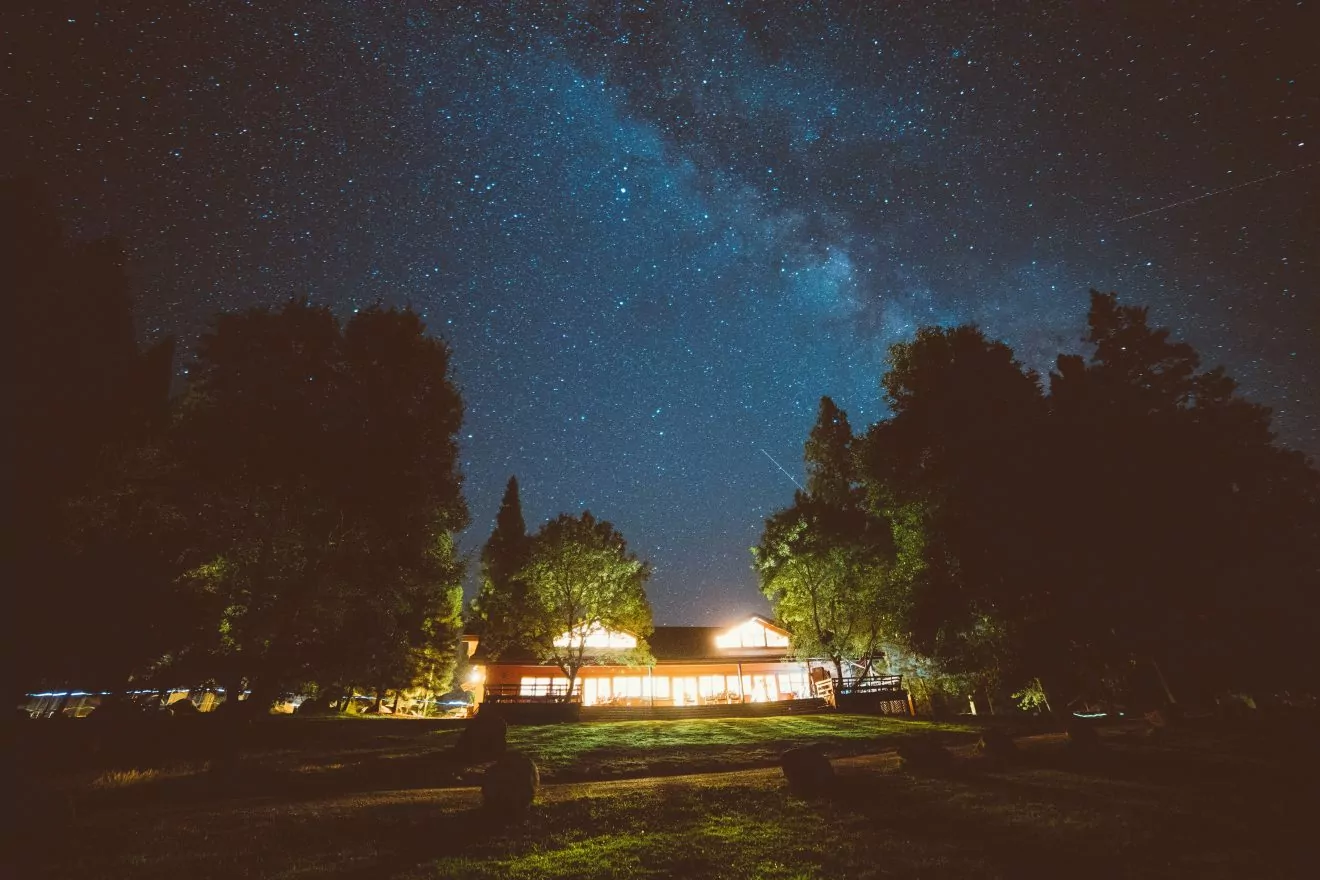
Photo by Adam Freeman on Unsplash
More traditional accommodations can be found in the park at various villages, including the Ahwahnee and Curry Village. The rooms are pricey but well worth the expense if camping isn’t your thing.
The Ahwahnee is considered Yosemite’s premier lodge. Built in 1927, the building is striking for its imposing granite facade and log beamed ceilings. It sits in the heart of Yosemite Valley and is an excellent place to view Half Dome and Yosemite Falls. The hotel also has a dining room, bar, and outdoor swimming pool for those looking for luxuries on their Yosemite vacation.
Curry Village is a slightly more affordable option for travelers who don’t want to stay in the campgrounds. The village offers standard hotel rooms, wooden cabins, and heated canvas tents for a variety of budgets. Curry Village is located in a beautiful part of the valley beneath Glacier Point, and also has a store, restaurants, a bar, and a pool for visitors who want to participate in other activities.
What to Do in Yosemite National Park
Backpacking
Backpacking is one of the best things to do in Yosemite National Park. There are endless trails and trip options—including five of our favorite Yosemite backpacking trips. Below are two of the stand-out options in Yosemite.
Pro Tip: To go backpacking in Yosemite, you’re going to need a wilderness permit for overnight camping. Here’s a handy guide to Yosemite’s backpacking permit system.
guided Yosemite Backpacking Trips
John Muir Trail
The John Muir Trail (JMT) is a classic long-distance backpacking trail, running 211 miles from Yosemite National Park to Mt. Whitney at the southern end of the Sierra. The entire trek takes several weeks, but hikers looking to do a shorter trip can hike some of the stunning miles in the park.
Section-hikers exiting the park will be competing with thru-hikers for permits, though, so be sure to plan far in advance – Yosemite only issues 45 exit permits per day over Donahue Pass.
Backpackers should also be aware that Yosemite has unique rules regarding food storage. Yosemite is full of bears that have become relatively accustomed to humans, so bear canisters are required and only specific models are accepted – no Ursacks allowed.
High Sierra Camps
The five High Sierra Camps offer all the joy of Yosemite backpacking with none of the burden. Backpackers can choose between guided and unguided trips, both of which have more luxuries than your usual backpacking excursion. Hikers still have to bring their own sleeping bags, but they will be sleeping in a dormitory-style canvas tent that fits up to six people and comes with breakfast and dinner. Restrooms are also available and showers are seasonally available at several of the camps based on water supply.
Day Hiking
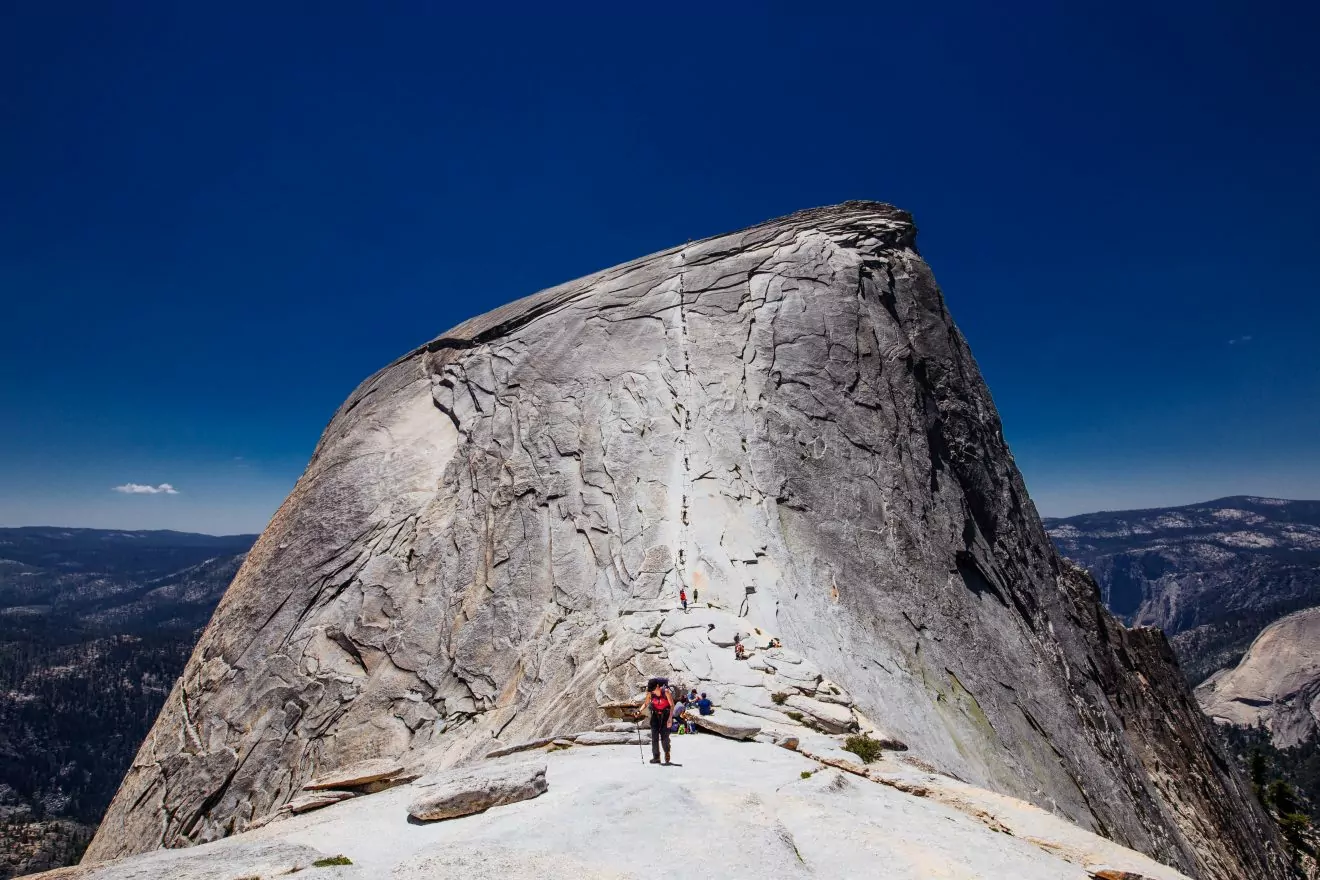
Photo by Denys Nevozhai on Unsplash
Half Dome
Half Dome is easily the most iconic feature in Yosemite and the ability to reach the summit isn’t just for climbers. Hikers can reach the top via a hefty hike (14-16 miles) that features waterfalls, a cable ladder, and mind-blowing views.
Hikers will want to leave very early to ensure they have enough time to reach the summit and account for waiting in line at the cables. The cables extend 400ft to the summit up slick, steep granite, so hikers should be prepared to wait. Yosemite strictly regulates the number of permits, only allowing 300 hikers per day via a pre-season or daily lottery. Even with these restrictions, one ladder for 300 hikers is still pretty competitive. Rangers take the cables down for the winter (October – May), so hikers have a pretty short time frame to snag one of the most desirable permits in the park.
If you’re lucky enough to win a permit, be sure to bring a headlamp, GPS, map, water, and thick gloves for the cables. If you don’t want to worry about the permit system, hire a guide for your Half Dome hike!
Yosemite Falls
Yosemite Falls tower 2,425 ft above the valley and hikers can reach the top of the waterfall on a strenuous trail from the valley floor near Camp 4. It’s one of Yosemite’s oldest trails, as it was built between 1873 and 1877. The route traverses a cliffside and can be very exposed, so only hikers who are comfortable with heights should attempt this trail.
Hikers can expect to spend 6-8 hours on the 7.2-mile hike to the top of the falls and back, but those with less time can find a good turnaround point one mile in at Columbia Rock
Sentinel Dome and Taft Point
Taft Point is one of the most photographed landmarks in Yosemite. When combined with Sentinel Dome into a 4.9-mile loop, the hike is an epic traverse with killer views of Half Dome, El Capitan, Yosemite Falls, and distant peaks of the High Sierra.
Taft Point is a narrow cliff point that protrudes slightly over the valley for a dramatic picture spot. You’ll also pass the Fissures, narrow fractures in the rock that can drop as far as 2,000 ft! At sunset, hikers will have to battle elopement photographers, couples, and other visitors to get a photo of the famous spot, so it’s better to stop at Taft Point on your way to Sentinel Dome for sunset.
Sentinel Dome is an exposed granite slope that offers 360-degree views of the park and no cliff walking. Hikers can see nearly every famous feature, including El Capitan, Half Dome, Vernal and Nevada Falls, and more. It’s also a great hike during the full moon, but be sure to bring a GPS and headlamp.
Cloud’s Rest
The hike to Cloud’s Rest is a big one – the 14.5-mile trail gains 1,775 ft and brings you to one of the most stunning panoramic views of Yosemite. The trail can only be hiked when Tioga Road is open, but it’s an excellent trail for hikers looking for a long day away from the crowds in the Valley and a vantage point even higher than Half Dome itself.
As you approach the summit of Cloud’s Rest, you’ll have to brave a narrow ridgeline with steep drop-offs on both sides. Although the walking is easy, those with a fear of heights may need to take some deep breaths to reach Cloud’s Rest.
Mariposa Grove
The Mariposa Grove is in the Wawona area of Yosemite, which is an hour’s drive from the valley, but visitors will be rewarded with shady hikes under the enormous sequoias. Some of the trails are paved and handicap-friendly, too, and currently, only handicapped visitors can park at the Grove Arrival area. Everyone else must park in the Mariposa Grove Welcome Plaza and take the shuttle (March – November but check for Covid updates) or hike the two-mile Washburn Trail to reach the Sequoia groves.
The Grizzly Giant Loop trail is a two-mile hike that passes near numerous famous trees, including the Bachelor and the Three Graces. Hikers can walk further into the grove on the Guardian’s Loop Trail, which passes more unique features like the Mariposa Grove Cabin and the Wawona Tunnel Tree. These hikes have mellower elevation profiles than most other trails in Yosemite and no nearby cliffs, making them an excellent choice for families or those who are uncomfortable around heights.
Matterhorn Peak
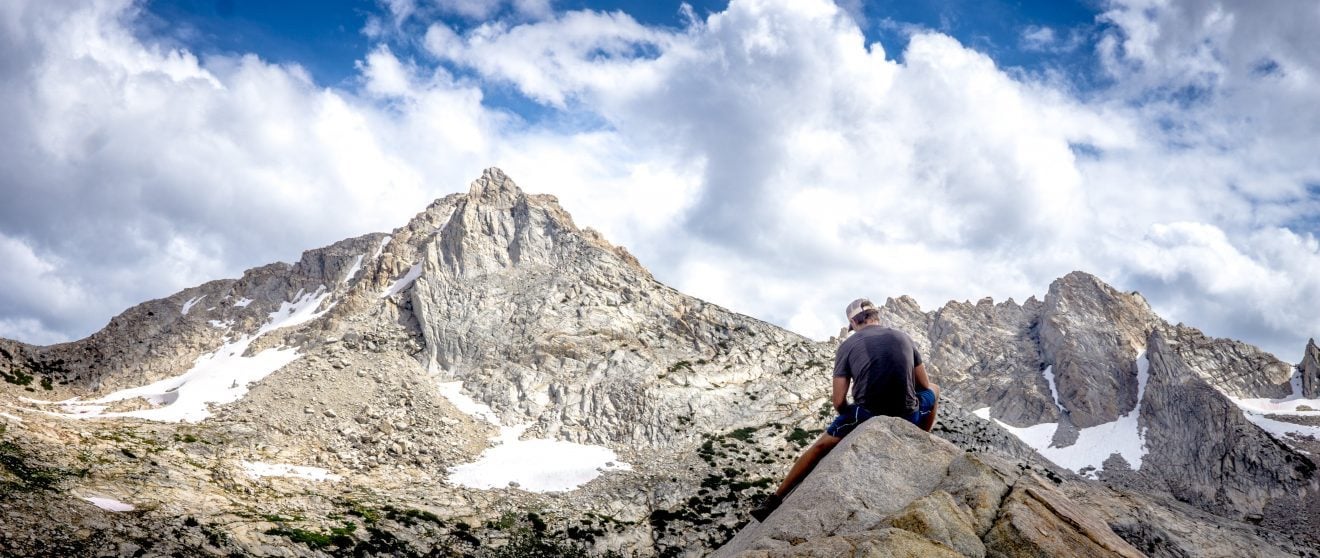
Photo by Aaron Thomas on Unsplash
Located at the northern end of the park, Matterhorn is famous for Jack Kerouac’s failed ascent with Gary Snyder in “The Dharma Bums.” Matterhorn is the highest peak in the Sawtooth Ridge, a series of sharp peaks that mark the edge of the High Sierra.
There are numerous routes up Matterhorn, but the most direct hiking route starts at Mono Village Resort near Bridgeport, CA. It is neither the easiest hike nor the most famous in the park – the trail gains over 5,000 feet in five miles and can be difficult to follow at times – but Kerouac fans or those who appreciate the remoteness will be rewarded with breathtaking 360-degree views of the wilderness.
More Resources
- 12 Best Yosemite Hikes
- Half Dome Hike: Everything You Need To Know
- Hiking the Pohono Trail
- Hiking the Valley Loop Trail in Yosemite
- Hiking the Panorama Trail
- Hiking the Yosemite Falls Trail
- All-inclusive Yosemite hiking tours
Biking
Yosemite Valley has 12 miles of paved pathways that visitors can explore by bike. Cyclists are also welcome to ride on the road but must obey traffic laws. E-bikes are allowed in the park, but they must respect the 15 mph speed limit.
Visitors who can’t bring their own bikes can either rent in the Valley or utilize Yosemite’s bike share program. Rentals are available at Curry Village, Yosemite Village, and the Yosemite Valley Lodge. To utilize the bike share program, download the Yosemite Bike Share app to have access to the park’s 50 bikes for up to two hours. The program starts in late Spring and ends in October.
Swimming
When the temps skyrocket, find a swimming hole and relax in the chilly waters of Yosemite National Park.
South Fork of the Merced River
The South Fork of the Merced River is a popular spot to cool off in the Wawona section of the park. The river flows through steep, inaccessible canyons for much of its length, but opens up near Wawona so swimmers can enjoy the water. The Wawona swimming hole is located north of the swinging bridge, where the river has carved smooth swimming holes into the granite. Be wary of swimming in the spring though – the river and creeks in Yosemite are fed by snowmelt, so the river may be too cold and fast for safe swimming.
Chilnualna Creek
Chilnualna Creek has several deep, large swimming holes that are off the beaten path. One spot, the Ledge, is a bit of a local secret that requires a bit of stamina. You can find it pretty easily on Google Earth and YouTube, but it does require a bit of scrambling over boulders and navigation. To find it without issue, visitors should inquire from locals in Wawona, or stay on the beaten path near the falls, which has other swimming opportunities.
Tenaya Lake
Tenaya Lake is a well-known swimming area off Tioga Road between Tuolomne Meadows and the Valley. The lake sits at 8,150 ft and is nestled beneath Tenaya Peak and other glacially carved domes. It is named after Chief Tenaya, of the Ahwahneechee tribe, who inhabited much of Yosemite until they were forcibly relocated in the 1850s.
Picnic areas and vault toilets are located on the northern, western, and eastern shores but the beaches on the western side have the best views. A cozy beach and small island on the west side of the lake can be reached from the Cloud’s Rest/Sunrise Lakes Trailhead.
Climbing
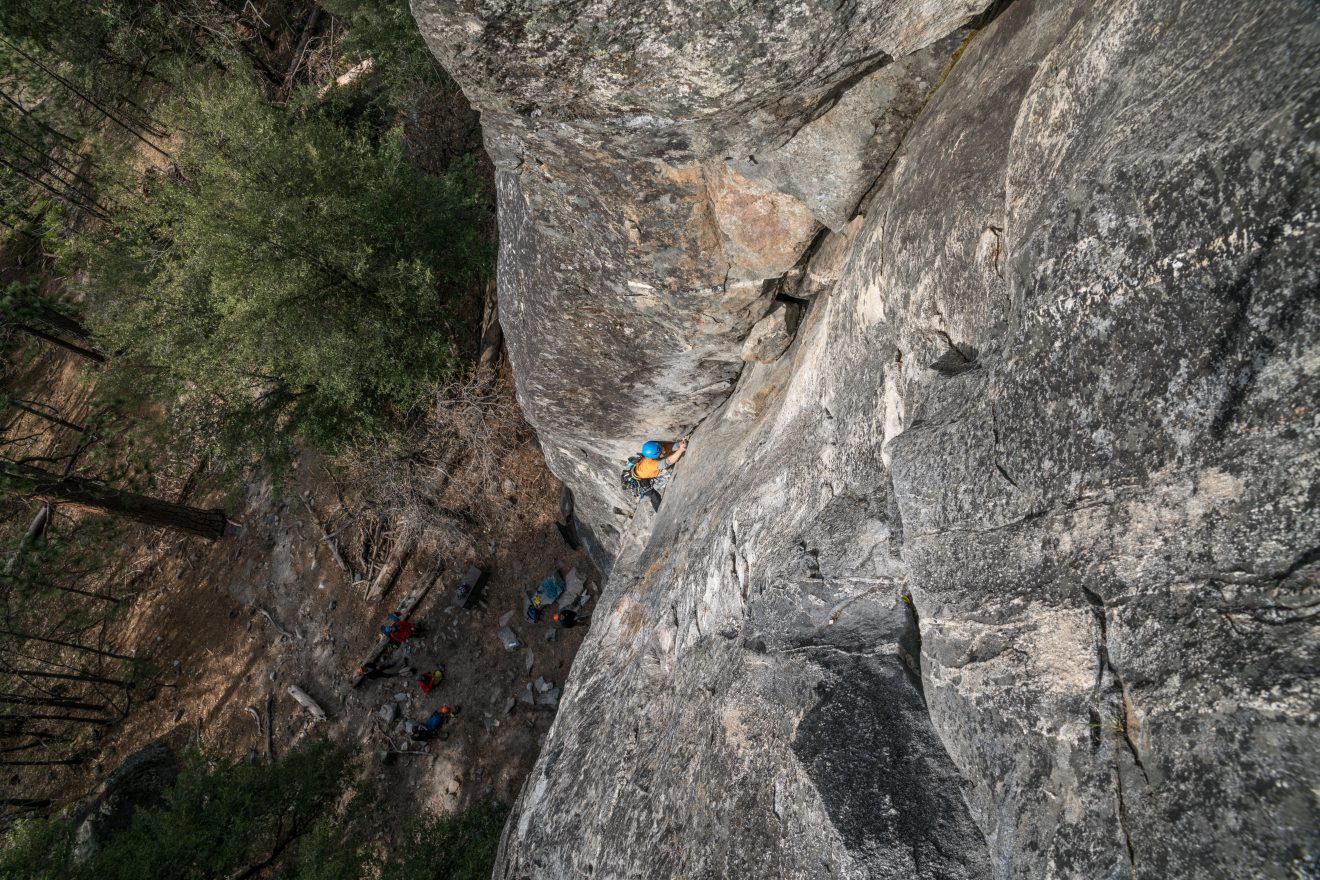
Photo by Tommy Lisbin on Unsplash
Yosemite is rich with climbing history, and today, you’ll see climbers bouldering in the Valley or high on the walls of El Capitan. As the sun sets, look out of the headlamps of climbers on the sheer walls.
Please note: Climbing is a very technical sport. Hire a guide if you have any doubt about your technical and physical abilities. This information is just for inspiration— please consult a climbing guide and talk to the climbing rangers before attempting one of these routes.
Southeast Buttress of Cathedral Peak
Click on Mountain Project’s “Rock Climbing Guide” and you’ll see that the Southeast Buttress is third on the list of “Top 10 Classic Rock Climbing Routes.” It’s a beginner-friendly route with stunning views of the Tuolumne area and is an impressive-looking wall in itself.
There are plenty of routes on the buttress and you’ll usually see climbers all over the face. Unless you stray too far right, most of the climbing is 5.3-5.6 with easy, grippy knobs and can be done with a full trad rack. The approach is relatively easy but is limited by Tioga Road’s seasonal status, so be sure the road is open before deciding to attempt this route.
Half Dome
The Snake Dike route is the easiest climb up Half Dome, though it’s rated 5.7R due to long distances without adequate protection. It doesn’t climb the face of Half Dome but it’s still one of the top climbs for beginning Yosemite climbers. The approach is 6 miles and requires a bit of navigation through swamps and ledge systems, so climbers should be very familiar with the approach before attempting. You’ll pass Vernal and Nevada Falls though, so it’s definitely one of the most scenic approaches.
More advanced climbers attempt the regular Northwest Face of Half Dome. 23 pitches cover 2,2ooft and are usually accomplished in two days, although the bivvy site is located underneath an unstable zone after a 2015 rockfall changed several of the pitches. The route is rated 5.9, but has the added challenge of difficult route finding due to excess bolts on some of the pitches that make it difficult to distinguish the correct pitch. The route is well worth the effort for many climbers, though, as it’s the Royal Robbins original and one of the best ways to climb the face of Half Dome.
The Nose
In the climbing world, Half Dome is only surpassed by El Capitan in awe. El Capitan rises over 3,000 ft from the valley floor in a sheer granite wall and its fame has been further emphasized by famous climbing endeavors and films by Alex Honnold, Tommy Caldwell, and others.
El Cap is hosts many popular climbing routes, but The Nose is the ultimate classic of them all. 31 pitches of 5.9 are demanding, and leaders should be competent at 5.10 trad to prevent delays on the wall. Fortunately, the approach is the easiest in Yosemite, as climbers simply have to cross the meadow from the road to the base of the wall.
Visit Yosemite National Park!
Whether you’re climbing El Capitan or taking sunset photos from Glacier Point, Yosemite National Park has something to keep everyone engaged.
During your visit, it’s important to acknowledge and treat the area with respect. The Valley was originally inhabited by the Southern Sierra Miwuk and Paiute peoples, who were further broken into 4 tribes. Many of them were forcefully displaced onto reservations when settlers came to the valley in the 1850s, though a small group managed to stay on their land and still live in the valley.
NPS reconstructed the village of Ahwahnee in the park to allow limited use to the remaining members of the Ahwahneechee tribe and educate visitors on the history of Yosemite Valley. It is a privilege to be able to visit this spectacular place, so be sure to Leave No Trace and appreciate the beauty of one of our most beloved national parks.
Join a Guided Hiking Adventure
JOIN A GUIDED HIKING ADVENTURE
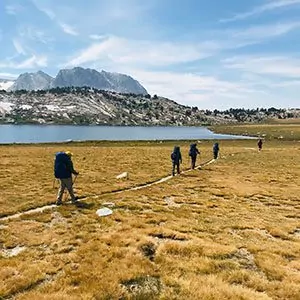 Yosemite National Park is home to some of the most epic and amazing hiking vacations in the world. Wildland Trekking offers trips with the best of Yosemite: waterfalls, views, wildlife, solitude, adventure and fascinating natural and cultural interpretation.
Yosemite National Park is home to some of the most epic and amazing hiking vacations in the world. Wildland Trekking offers trips with the best of Yosemite: waterfalls, views, wildlife, solitude, adventure and fascinating natural and cultural interpretation.
Guided Yosemite treks are all-inclusive which covers permits; local transportation (excluded on certain tours); meals; equipment; safety systems and professional hiking/wilderness guides; all of which allows visitors to maximize their time in Yosemite and focus entirely on enjoying the Park.
YOSEMITE ADVENTURE TOURS
- GUIDED BACKPACKING ADVENTURES: these are for people interested in an authentic Yosemite hiking adventure away from the roads and crowds.
- PORTERED TRIPS: on these innovative trips, guests hike with light day packs and camp near in stunning backcountry locations.
- INN-BASED PACKAGES: these tours are all-inclusive packages with lodging, amazing daily hikes, expert guides, meals, transportation and more!
- CAMPING-BASED HIKING PACKAGES: camping-based hiking packages provide all-around hiking experiences of Yosemite on wonderful outdoor vacations.
- DAY HIKE TOURS: maximize your day in Yosemite on a fully guided, award-winning hiking tour on one of the Park’s best trails.





